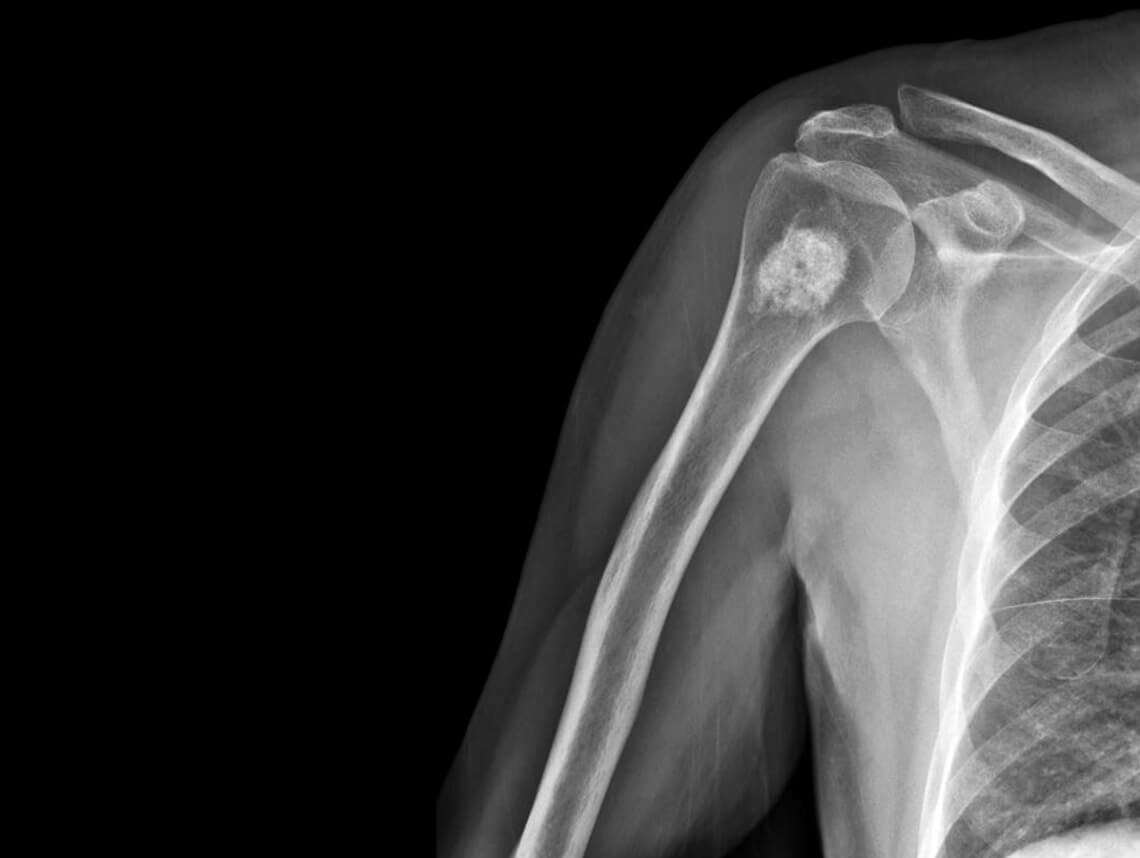There are so many conditions that most of us are unaware of until we encounter them personally. This is often the case for parents who find out their child has pediatric osteochondroma. The uncertainty of a new condition can add to the stress of seeking treatment and ensuring you are meeting care needs, which is why it is essential to educate yourself as a caregiver.
As a benign form of bone tumor, pediatric osteochondroma has a positive prognosis in a large number of cases, but it’s still important to understand the potential complications and treatment options for this condition. Take a moment to read the following guide so you can gain a deeper understanding and be engaged and informed about your little one’s care and therapeutic needs.
What is pediatric osteochondroma?
A pediatric osteochondroma is a form of non-cancerous, or benign, tumor that occurs in children. Osteochondroma usually develop on pieces of cartilage, called growth plates, found at the end of growing bones. The growth will take the form of a combination of bone and cartilage.
In most cases of this condition, children will only develop a single growth, called solitary osteochondroma. These are believed to be the most common type of bone tumor, accounting for at least a third of all benign cases.
Multiple growths are possible but rare. Because it is extremely rare for osteochondroma to become malignant, most physicians do not recommend removing these growths unless they are causing problems with growth or are painful.
Pediatric Osteochondroma Causes
Currently, doctors and medical researchers do not know the primary cause of solitary pediatric osteochondroma. One potential cause is a growth abnormality in the growth plate. There is also some possibility of a genetic component as well. Multiple osteochondroma can be related to a heritable, genetic condition, but they can also occur sporadically as well.
Pediatric Osteochondroma Risk Factors
The risk factors for this condition are not fully understood as well, although it is not believed to be related to injury.
Pediatric Osteochondroma Symptoms
For many children, pediatric osteochondroma will not cause symptoms, and the condition is often diagnosed later in childhood or even adulthood. Possible symptoms can include:
- A small visible bump near joints, particularly the knees and shoulders
- Associated pain if the growth is under a tendon or other piece of connective tissue that becomes aggravated or injured
- Neuropathic symptoms, such as tingling and numbness, if the growth compresses or irritates a nerve
- Pressure on a nearby blood vessel, in very rare cases
Pediatric Osteochondroma Complications
One possible complication of pediatric osteochondroma is for an injury to cause the growth to break off. This can result in pain and swelling around the area.
Diagnosing Pediatric Osteochondroma
Due to the rarity and/or minor severity of symptoms, a pediatric osteochondroma is often discovered due to an X-ray or examination for a related condition. Patients seeking a diagnosis to determine the cause of joint pain or a visible bump will generally undergo the following steps:
- Medical history review, including family
- Questions about any symptoms and how they are affecting daily activities
- Hands-on examination, or palpation, of any visible protrusions or painful areas
- Additional diagnostic testing, such as an X-ray, MRI, CT scan, bone scan, or blood work
Pediatric Osteochondroma Treatment
If the osteochondroma is not causing pain and is not likely to cause a fracture, there may be no need for additional treatment. In many cases, the osteochondroma will not continue to develop after an adolescent has reached skeletal maturity, which means a minimal risk that the growth will worsen over time.
For osteochondromas that are causing pain or other problems, surgical excision may be required to fully remove the growth. This involves accessing the tumor and removing the lesion to return it down to the level of the bone. These procedures have a high success rate, although in a very small percentage of cases the growth may return.
Caring for a Child With Pediatric Osteochondroma
Children recovering from a surgical procedure such as excision for pediatric osteochondroma may have additional care needs. The timeline for returning to normal activities can vary on a case-by-case basis. In some situations, families can benefit from care assistance such as pediatric home health services, to meet certain needs associated with pediatric osteochondroma or surgical recovery.
Contact Care Options for Kids for Home Health Care in Florida
It can be hard to balance your time between work, home, and caring for a child. That’s why our team of skilled professionals at Care Options for Kids is here to help. We have been enforcing precautionary measures and following the Centers For Disease Control (CDC) guidelines for COVID-19 to ensure the safety and health of our clients and employees.
Our home health care services offer support in the comfort of your home. We refer loving and competent nurses to provide customized care for families — from a few hours a day to around-the-clock supervision. Contact us directly to speak with a home health care professional or request a free in-home assessment. Together we can determine the best plan of action to keep your loved ones happy and healthy.
If you or a loved one are considering Pediatric Home Health Care Services in Florida, contact the caring staff at Care Options for Kids. Call today at (888) 592-5855.






